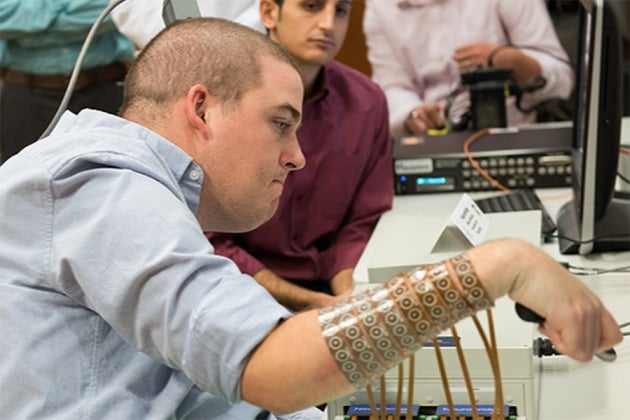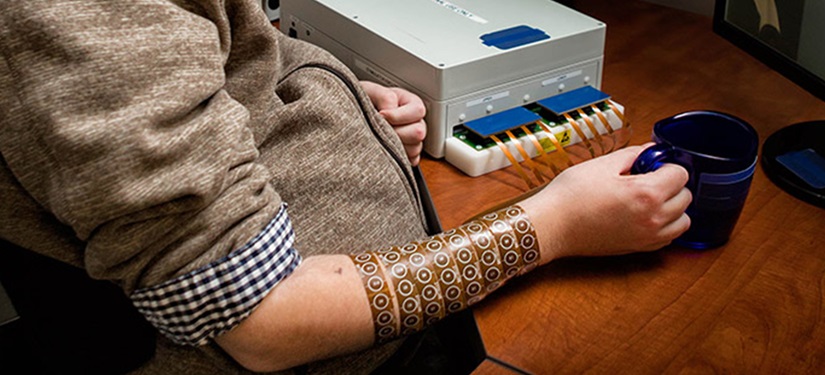
Twenty-four-year-old Ohio resident Ian Burkhart had lost all hope of being able to move his limbs again after a tragic diving accident left him paralyzed, six years ago. But on April 13, doctors from The Ohio State University and Battelle Memorial Institute reported that for the first time in medical history, they had been able to restore movement to the young man’s fingers without the use of external prosthetics. This means that Ian can now perform tasks like brushing his teeth, pouring water into a glass, and even playing Guitar Hero by just thinking about them. Though these may seem like small feats, they are tremendous achievements for someone whose body has been totally lifeless for many years.
Ian was vacationing at the beach when he inadvertently dived into a shallow wave. The impact of hitting the sandy bottom caused extensive damage to his spine, leaving the young boy paralyzed from the chest down. Fortunately for Ian, just 25 minutes away from his hometown of Dublin, a team of researchers at the Battelle Memorial Institute were developing Neurolife — A technology that enables quadriplegics like Ian to move their limbs by decoding their thoughts.

(Photo Credit: wexnermedical.osu.edu)
The clinical trial, that involved inserting a chip inside the brain, was not without risk. Even if the surgery was successful, there was no guarantee the technology would work given that it had never been tested on a human before. But these issues did not discourage Ian. He said, “I knew I was going to be taken care of, and something’s going to come along to help people like me eventually — so why not try.”
The procedure, which was performed on Ian two years ago, involves implanting a microchip in the precise area of the motor cortex that is linked to hand movements. When Ian thinks of a particular action he wants to perform with his hands, the chip detects the electrical activity and sends it to a computer via an attached cable. Smart algorithms translate the signals and convert them into electrical pulses that are transmitted to a sleeve on Ian’s forearm. The electrical pulses pass through the 130 electrodes embedded in the sleeve and cause his muscles to contract.
Though Ian was able to open and close his hand instantly after being hooked up to the machine, he had to train the algorithms when he was trying to do something more precise, like picking up a glass. That’s because each movement means a different combination of impulses, something the machine had to be taught. “The signal changes constantly as learning happens, and we had to adjust to those changes,” said Herbert Bresler, a senior research leader at Battelle Memorial Institute. “The machine learned as Ian Burkhart learned.” Not surprisingly the process was extremely slow. For example, it took Ian an entire year to perfect the simple task of picking up a bottle of water and pouring it in a glass.

In addition to the amount of time it takes to learn, the technology currently only works when Ian’s hand is connected to the computers in the lab. Dr. Ali Rezai, the co-author of the study and a neurosurgeon at the Ohio State University’s Wexner Medical Center, says that the next goal is to make the system more streamlined, so that Ian can use it at home as well. The researcher, who plans to conduct similar trials on four other patients, says that the team’s ultimate goal is to help all people with disabilities to become more “independent and have control and autonomy.”
Resources: wexnermedical.osu.edu, nature.com, cnn.com, statnews.com